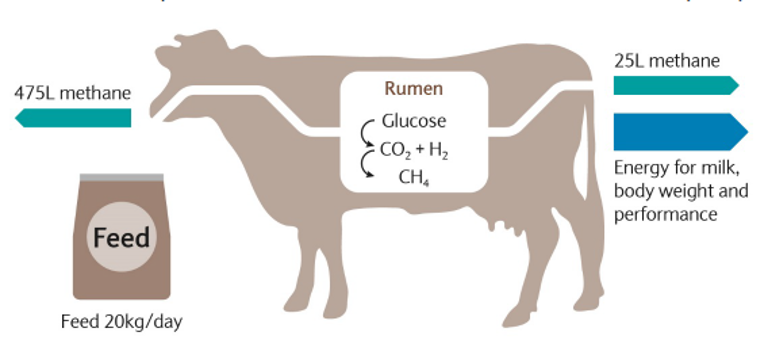
Cow burps and climate change
While the terms cow-pocalypse and cow-spiracy might not yet be household terms, they could become part of common language in the near future. When we think of climate change, it is not the image of a calmly grass-chewing cow grazing on a luscious green pasture that first springs to mind, but that may change.
Unknown to most of us, cows are a major global warming contributor as the methane they emit (produced during burping and, to a lesser extent, farting) is a very potent greenhouse gas. When methane leaks into air, it starts to absorb the sun’s heat which leads to warming of the atmosphere. While methane doesn't remain in the atmosphere as long as carbon dioxide does, it is far more devastating to our climate because of how good it is in heat absorption. According to scientists, methane is 86 times more potent than carbon dioxide1.
In an United Nations report entitled ‘Livestock's Long Shadow’2 , we learn that the world's 1.5 billion ruminants are responsible for 14.5% of all greenhouse gases emitted every year. That is more than all cars and planes taken together!
Enter DSM, a large Dutch multinational company active in the area of nutrition and materials where PGGM holds an ownership stake. After 10 years of intense research, clever scientists from DSM have invented a feed supplement for cows that helps reduce their daily methane emissions of approximately 500 liter by between 25-30% (or expressed differently, results in 1 ton saving of CO2 equivalent per cow per year). It will be marketed under the name of Bovaer.

Cows have four stomachs where billions of bacteria live and help digest food. The problem is that some of these bacteria also happen to produce methane, which is then emitted by the cow. DSM scientists have found a molecule that shuts off an enzyme that directs methane production by those bacteria. Those molecules can be added to the cows’ regular diet and in this way the cow reduces its methane production capacity as it eats.
This little trick could substantially lower the carbon footprint of cows and have a meaningful impact on global climate change-related emissions. For example, 22 million European dairy cows produce about 157 million kg of milk resulting in a footprint of 148 million tons of carbon. If we could reduce this amount by a quarter (as Clean Cow is able to do) that would result in carbon savings of 37 million tons. To put it in perspective, this equals the CO2 emissions from the electricity use of 5.5 million homes per year, enough to power all lights in Switzerland and Denmark!

This little trick could substantially lower the carbon footprint of cows and have a meaningful impact on global climate change-related emissions. For example, 22 million European dairy cows produce about 157 million kg of milk resulting in a footprint of 148 million tons of carbon. If we could reduce this amount by a quarter (as Clean Cow is able to do) that would result in carbon savings of 37 million tons. To put it in perspective, this equals the CO2 emissions from the electricity use of 5.5 million homes per year, enough to power all lights in Switzerland and Denmark!
Images courtsey of DSM
1) https://www.scientificamerican.com/article/how-bad-of-a-greenhouse-gas-is-methane/
2) http://www.fao.org/3/a-a0701e.pdf
Share or Print Article
click on the icon




